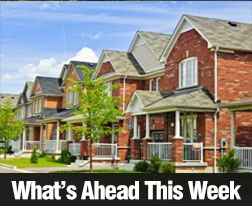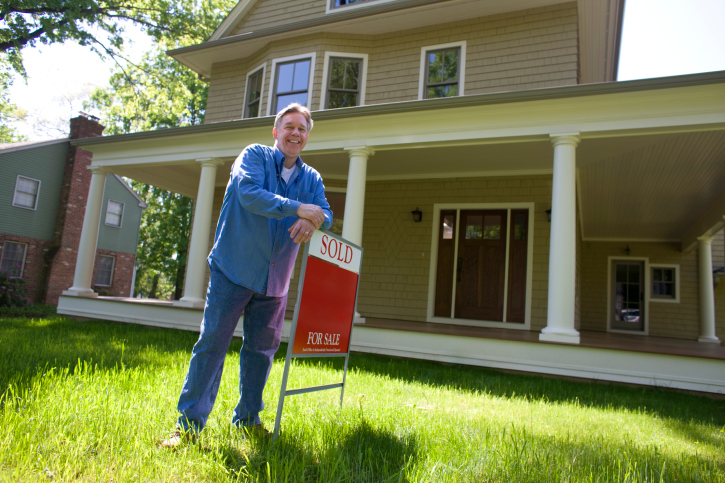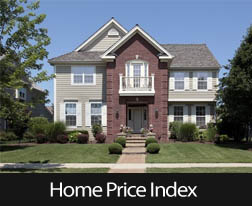 S&P Case Shiller Home Price Indices reported new record gains for home prices in June. The National Home Price Index rose by a seasonally-adjusted annual pace of 18.60 percent as compared to May’s home price increase rate of 16.80 percent. Home prices were 41 percent higher than they were during the 2006 housing boom; home price growth was driven by high demand for homes coupled with short supplies of homes for sale.
S&P Case Shiller Home Price Indices reported new record gains for home prices in June. The National Home Price Index rose by a seasonally-adjusted annual pace of 18.60 percent as compared to May’s home price increase rate of 16.80 percent. Home prices were 41 percent higher than they were during the 2006 housing boom; home price growth was driven by high demand for homes coupled with short supplies of homes for sale.
20-City Home Price Index Posts Month-to-Month Home Price Gain of 2 Percent
The S&P Case-Shiller 20-City Home Price Index posted a two percent gain in June as compared to May. Home prices rose by 19.10 percent on a seasonally adjusted annual basis in June; all 20 cities included in the index reported higher home prices. Phoenix, Arizona held first place for home price growth in June with a year-over-year price gain of 29.30 percent. San Diego, California held second place in the 20-City Home Price Index with a year-over-year price gain of 27.10 percent and Seattle Washington followed with year-over-year home price growth of 25.00 percent.
All 20 cities posted higher home price gains in June than in May. Craig Lazzara, managing director and global head of index investment strategy at S&P Dow Jones Indices, said: “In June all 20 cities gained more in the 12 months ended in June than they did in the 12 months ended in May.”
Analysts Say Current Home Price Growth is Unsustainable
Rapidly rising home prices sidelined would-be homebuyers who expressed concerns over the fast pace of home sales, and limited choices of available homes. Cash buyers and bidding wars continued to challenge mortgage-dependent homebuyers, but low mortgage rates continued to draw homebuyers into the market.
Covid fueled an exodus from congested urban areas to less populated areas inland. Families who modified their lifestyles to include working from home and homeschooling their children needed larger homes. As workers switched from commuting to work to telecommuting, they were no longer constrained by physical proximity to their employers, but now that businesses and workplaces are reopening, it’s unknown how or if pre-covid housing and work trends will be re-established or if covid era home-based work and schooling options will expand.
In related news, the Federal Housing Finance Agency released data on sales of single-family homes owned or mortgaged by Fannie Mae and Freddie Mac. Home prices rose 17.4 percent from the second quarter of 2020 to the second quarter of 2021.FHFA reported that home prices rose 4.90 percent from the first quarter of 2021 through the second quarter of 2021, and were 1.60 percent higher for June 2021 than in May.
 Home prices continued to rise at record rates in May according to S&P Case-Shiller Home Price Indices. National home prices rose by 16.60 percent year-over-year in May as compared to 14.80 percent year-over-year price growth in April. The 10-City Home Price Index reported home prices rose 16.40 percent year-over-year and 1.90 percent month-to-month.
Home prices continued to rise at record rates in May according to S&P Case-Shiller Home Price Indices. National home prices rose by 16.60 percent year-over-year in May as compared to 14.80 percent year-over-year price growth in April. The 10-City Home Price Index reported home prices rose 16.40 percent year-over-year and 1.90 percent month-to-month. Last week’s economic reports included Pending Home Sales, Construction Spending and several reports on jobs and employment. The details:
Last week’s economic reports included Pending Home Sales, Construction Spending and several reports on jobs and employment. The details: Sales of previously owned homes dropped in August by 4.80 percent on an annual basis for the first time in four months; the dip was likely caused by rising home prices. August sales were reported at a rate of 5.31 million; July’s rate was 5.58 million sales of previously owned homes.
Sales of previously owned homes dropped in August by 4.80 percent on an annual basis for the first time in four months; the dip was likely caused by rising home prices. August sales were reported at a rate of 5.31 million; July’s rate was 5.58 million sales of previously owned homes. According to the Case-Shiller 20-City Home Price Index for February, month-to-month home prices increased by 0.50 percent from January’s reading and achieved the highest year-over-year gain in six months. Analysts expected February home prices to increase by 4.80 percent. David Blitzer, chairman of the S&P Dow Jones index committee, said that home prices continue to rise and outpace both inflation and wage gains. Although this is great news for homeowners, it also demonstrates the challenge of affordability for home buyers.
According to the Case-Shiller 20-City Home Price Index for February, month-to-month home prices increased by 0.50 percent from January’s reading and achieved the highest year-over-year gain in six months. Analysts expected February home prices to increase by 4.80 percent. David Blitzer, chairman of the S&P Dow Jones index committee, said that home prices continue to rise and outpace both inflation and wage gains. Although this is great news for homeowners, it also demonstrates the challenge of affordability for home buyers. According to the S&P Case-Shiller Home Price Index report for January, home prices grew by 4.50 percent year-over-year as compared to January 2014’s year-over-year price growth rate of 10.50 percent. This was the lowest rate of home price growth since 2012.
According to the S&P Case-Shiller Home Price Index report for January, home prices grew by 4.50 percent year-over-year as compared to January 2014’s year-over-year price growth rate of 10.50 percent. This was the lowest rate of home price growth since 2012.